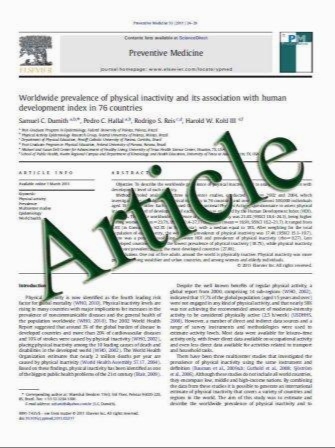Deseeatrcehrminants of psychological morbidity in survivors of the earthquake and tsunami in Aceh and Nias
- نوع فایل : کتاب
- زبان : انگلیسی
- مؤلف : I Irmansyah1, Suryo Dharmono1, Albert Maramis1,2 and Harry Minas*3
- چاپ و سال / کشور: 2010
Description
Background: The goal of this study was to collect information to inform the design of a mental health response following the massive December 2004 earthquake and tsunami in Aceh and North Sumatra, Indonesia. As well as exploring the effect on mental health of direct exposure to the tsunami the study was designed to examine the effect on mental health of immediate post-disaster changes in life circumstances (impact). Methods: Information was collected from a sample of 783 people aged 15 years and over in earthquake and tsunamiaffected areas of Aceh and Nias, 616 Internally Displaced Persons (IDPs) and 167 non-IDPs. The structured questionnaire that was designed for data collection consisted of demographic information, measures of disaster exposure and of changes in life circumstances (impact), the extended version of the Self-Reporting Questionnaire (SRQ), and a brief measure of resilience. Group comparisons, contrasting responses of IDPs and non-IDPs, were by chi-square for frequency data and t-tests for ordinal or continuous data. Hierarchical multiple linear regression analyses were performed to examine the relative contributions to psychopathology of demographic variables and measures of exposure, impact and resilience. Results: High rates of psychopathology, including symptoms of anxiety and affective disorders and post-traumatic stress syndrome, were recorded in the overall sample, particularly in Internally Displaced Persons (IDPs) who experienced more substantial post-disaster changes in life circumstances (impact). The IDP group experienced significantly more SRQ symptoms than did the non-IDP group. Demographic factors alone accounted for less two percent of variance in SRQ-scores. Higher SRQ-20 scores were observed among women, those with lower education, those with diminished resilience beliefs, those experiencing high scores on disaster impact, those experiencing direct exposures to the disaster, and due to (unmeasured) conditions related to being an IDP. The greatest effect among these was due to disaster impacts. The pattern was similar when considering post-traumatic stress symptoms separately. Conclusions: Negative changes in a person's life circumstances following a disaster appear to have as important an effect on psychopathology as the direct experience of the disaster. Ameliorating the extent and duration of postdisaster negative changes in life circumstances may play an important role in prevention of post-disaster psychological morbidity.


